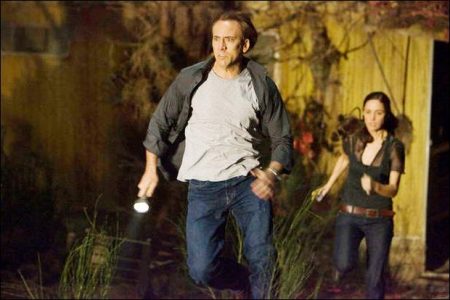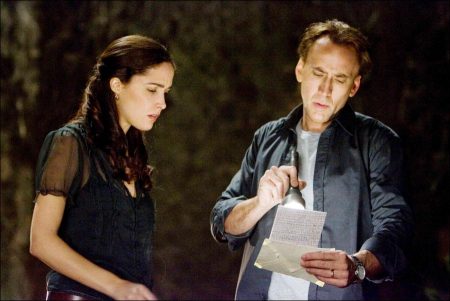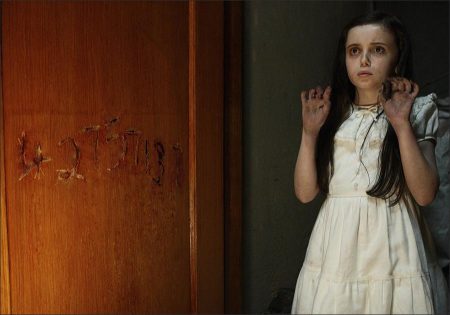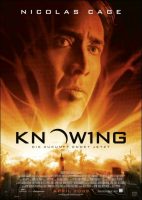Making Knowing – Step By Step
Knowing Movie Trailer. The Australian city of Melbourne, which stands in for the Koestlers. hometown of Boston, provided the Knowing filmmakers with first-rate production professionals and facilities.
“It was my first time working in Australia, and the crew was excellent,” says Blumenthal. “Top to bottom, the technical know-how was equal to anywhere we.ve ever shot a movie. And these are people who have worked together before, so they have a shorthand. There.s a lot of moving parts on a film set and if they aren.t synchronized it can cause problems.”
For Proyas, who has worked often in Sydney, Melbourne was a treat. “It was exciting to be somewhere where I could see some new stuff and work in some new places,” he says. “It’s actually a bit easier to work here than Sydney where.s there.s so much traffic and everything gets a little crazy. It’s a very amenable city for filmmaking right now.”
Production designer Steven Jones-Evans was charged with the task of transforming Melbourne into Boston. “Melbourne has been in a drought for the last five years, so the grass was totally brown,” he remembers. “It was very hard finding anything when we needed gardens or anything like that. We used Melbourne University for MIT, and the lawn there was totally parched, so the week before, we went there and sprayed the whole lawn green.
“Luckily, a lot of the film was set in autumn and the shoot coincided with that season in Melbourne. It.s not the autumn that you get around the Boston area, which is a lot more colorful, so we were constantly lugging around these huge bags of colored leaves that we.d spread out everywhere.”
For the Koestler home, Jones-Evans wanted an archetypal New England house. “The idea was that he and his wife bought it in a slightly dilapidated state, planning to bring up a family in it, to renovate it, and return it to its former glory. There were a lot of personal things that we built into the house, like Caleb.s room. We decided to make it an attic room with one circular window right in the front, which is a motif that Alex has used often.”
The production designer also included lots of items related to nature, like toy animals or images of landscapes. “The idea was that Caleb was interested in things that connected him to the Earth.”
Jones-Evans also was responsible for creating the item at the center of the film.s mystery: the time capsule. The idea goes back to the 1939 World.s Fair, whose organizers hit upon the idea of burying a sort of message in a bottle for future generations. The metal container, which was buried on the fairgrounds as part of the Westinghouse Company.s exhibit, contained such staples of contemporary life as a needle and a spool of thread, a newsreel and microfilm copies of both a dictionary and the latest Sears Roebuck catalog. It was meant to be unearthed in the year 6939.
“We looked at other time capsules,” says Jones-Evans. “There were so many different designs. The Westinghouse capsule was a missile-shaped thing, which we decided was too militaristic for our use.”
The designer went back to 1958 for his inspiration. “The design is informed by that era, but it is not a pure vintage thing. It.s a little more classically shaped and made of stainless steel. It has a lid on it that screws down with two wing nuts. We kept it simple because it was more about what was going inside the capsule, rather than the capsule itself.”
Working in 1950s design vernacular for the first part of the film was a pleasure for the designer. “It was an interesting time. There was a lot more hope and a lot less cynicism in the world. Pollution and other environmental problems were only just becoming issues. So it was a much more pure, hopeful age. We went for a slightly brighter color palette in those scenes to make that feel a little bit more cheerful and hopeful.”
One of the film.s most challenging sequences, the airplane crash, required both Jones-Evans. design skill and some help from the visual effects team. “Alex wanted to do it as a single shot. He wanted to bring the plane in, fly it through a telephone pole and hit a car with its wing. The car flips up and it crashes into a field and breaks into pieces. We built the actual wreckage of the plane, but it wouldn.t have been possible to get everything in one shot without a lot of help from the effects department.
“I enjoy working with visual effects in order to complete or augment something we.ve done,” he adds. “The visual effects supervisor was on from the early stages of preproduction, so there’s been quite a bit of information and dialogue and chatting about how to solve certain sequences or problems that we have.”
Knowing is one the first feature films to be shot with the Red One Camera, the latest in lightweight high resolution digital technology. Simon Duggan, the film.s director of photography, says the Red One Camera has filmmakers looking at digital cameras in a new light.
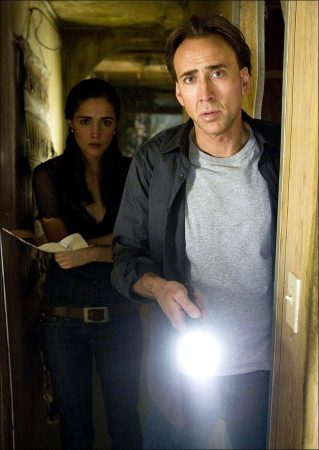
“The skin tones are soft and look fantastic. There.s hardly any noise or grain in the images. We were looking for a very immediate quality for our picture and this is virtually identical to film.”
Proyas and Duggan conducted extensive tests before deciding to go with the digital format. “They were both excited about the potential of using the camera,” says Blumenthal. “It made things move very quickly. We were able to do so much more on set than when we used to have to wait to do it in post, like tweaking color.”
“Alex hates for anything to look lit,” notes Duggan. “With the Red One Camera, we didn.t have to wait overnight just to see if a lighting scheme worked out. It.s all immediate, and we ended up having more confidence in pushing the limits of what we were doing.”
As a producer, Blumenthal had to balance the excitement of being a digital pioneer and the anxiety of feeling like a digital guinea pig, he says. “But we try to be as forward thinking as possible, and this was a real learning experience. This technique provided us with an opportunity to present our story with a unique new look. With the way technology is advancing, what used to be science fiction is now science fact, and we used it because it could give us the best qualityproduct.”
What Would You Put in a Time Capsule?
Like most people, the cast and crew of Knowing have never had the opportunity to put anything in a time capsule, but all of them had unique suggestions.
Lara Robinson: Well, I.ve never seen a time capsule, but I have heard about them. I.d put in my favorite songs. I.d probably put in some classical music and some jazz things and some sort of modern music. I would put in photos of what our computers and electronic things look like to see if they.ve changed. I would put a journal of a year of my life and photos of landmarks in Australia. And I.d put a globe in, just in case things change. Finally, I would put in a book about Australia. I.d probably put a time capsule in for a hundred years and see what the difference is then.
Rose Byrne: I.d like to put in a diary, something a bit racy, with good secrets, so it would be entertaining for the person who found it.
Chandler Canterbury: I would put in a picture of my family to show what fun we’ve had together…and maybe Legos.
Steven Jones-Evans: I.d like to put myself into a time capsule. That would be the greatest thing, if I could preserve myself and put myself into a time capsule and come out and see what the future is going to be like. Maybe just my brain or something like that.
Nicolas Cage: It would be interesting to put this movie into a time capsule, because then it would become very cubist.
Knowing (2009)
Directed by: Alex Proyas
Starring: Nicolas Cage, Rose Byrne, Chandler Canterbury, Lara Robinson, Nadia Townsend, Adrienne Pickering, D.G. Maloney, Chandler Canterbury, Joshua Long, Danielle Carter
Screenplay by: Alex Proyas, Stuart Hazeldine, Juliet Snowden
Production Design by: Steven Jones-Evans
Cinematography by: Simon Duggan
Film Editing by: Richard Learoyd
Costume Design byı Terry Ryan
Art Direction by: Sam Lennox
Music by: Marco Beltrami
MPAA Rating: PG-13 for disaster sequences, disturbing images and brief strong language.
Distributed by: Summit Entertainment
Release Date: March 20, 2009
Views: 183
